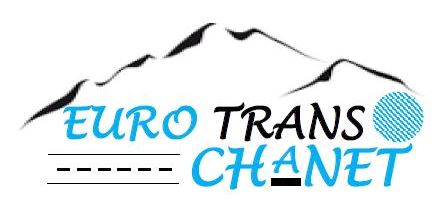- Des questions ?
- 04 73 79 19 76
- eurotrans.chanet@eurotranschanet.fr
Why Company Issue Esop
Which Statement Is True for Subject-Predicate Agreement
19 avril 2022Withdrawal Agreement Environment
20 avril 2022Nevertheless, the ultimate test for employee ownership is the impact of ESOPs on business performance. If the only way to keep a business competitive is to distance employees from the leadership privileges of ownership, then so be it. When a ship sinks, it is no consolation to the surviving hands that they own a piece of the wreckage. Companies set up a trust fund for employees and give money to buy shares of the company, add shares directly to the plan or let the plan borrow money to buy shares. When the plan borrows money, the company contributes to the plan so that it can repay the loan. Contributions to the plan are tax deductible. Employees do not pay tax on contributions until they receive the shares when they retire or retire. You then sell it either on the market or to the company. Provided that an ESOP holds 30% or more of the company`s shares and the company is a C company, the owners of a private company that sells to an ESOP can defer the taxation of their profits by reinvesting in securities of other companies.
S companies can also have ESOPs. Profits attributable to esop`s interest in S companies are not taxable. This provision of federal tax law can increase the amount of cash available to a company compared to traditional financing. Definition: An employee share ownership plan (OHSP) is a type of benefit plan designed to encourage employees to purchase shares or interests in the business. Description: Under these plans, the employer gives certain shares of the business to the employee for negligible or lower costs that remain in the ESOP trust fund until the options are vested and the employee exercises them or the employee leaves the business or institution or withdraws from the business or institution. These plans aim to improve the company`s performance and increase the value of shares by involving shareholders, who are also employees, in the company`s work. ESOPs help minimize problems with incentives. See also: Employee Benefit Plan, Employee Stock Options, Employee Purchase Plans, Contingency Funds, Tipping, Social Security Benefits, Insurance Plans While it is true that some ESOPs have been used as a last resort to bail out failing companies, prevent hostile takeovers, or even get employees to make wage concessions, The U.S. General Accounting Office reports that such cases account for only about 3% of all business plans.
Only about 8% have left their retirement plans to create their ESOPs, and about 40% of all ESOP companies have at least one other type of retirement plan. Of the more than 100 ESOP companies we examined, only one had asked for wage concessions; Managers of the others reported that their salaries and benefits were quite competitive, regardless of the ESOPs. An ESOP is a type of pension plan that is somewhat similar to a profit-sharing plan. In an ESOP, a company creates a trust fund in which it contributes new shares of its own shares or money to buy existing shares. Alternatively, ESOP can borrow money to buy new or existing shares, with the company making cash contributions to the plan in order to repay the loan. Regardless of how the plan acquires shares, the corporation`s contributions to the trust are tax deductible within certain limits. The Tax Act of 2017 limits net interest deductions for businesses to 30% of EBITDA (earnings before interest, taxes, depreciation and amortization) for four years, with the limit falling to 30% of EBITDA (excluding EBITDA). In other words, starting in 2022, companies will deduct depreciation from their profits before calculating their maximum deductible interest payments. In some circumstances, ESOPs have been used to finance the purchase of a business or business department that would otherwise have been closed.
Finding a buyer for a tightly owned business isn`t always easy, even if the business is profitable. If a buyer cannot be found, businesses can simply close and deny the local economy jobs and the products or services offered by the business. An ESOP is set up by the company, which applies a specially developed ESOP plan and fiduciary documents. When we only looked at ESOP companies, our most interesting result was the impact of employee participation. Regardless of the size of the company or the amount of employee contributions, or even the percentage of the company owned by ESOP, the most striking correlation was between the company`s performance and employees` perception of their managers` attitude towards employee participation. .
